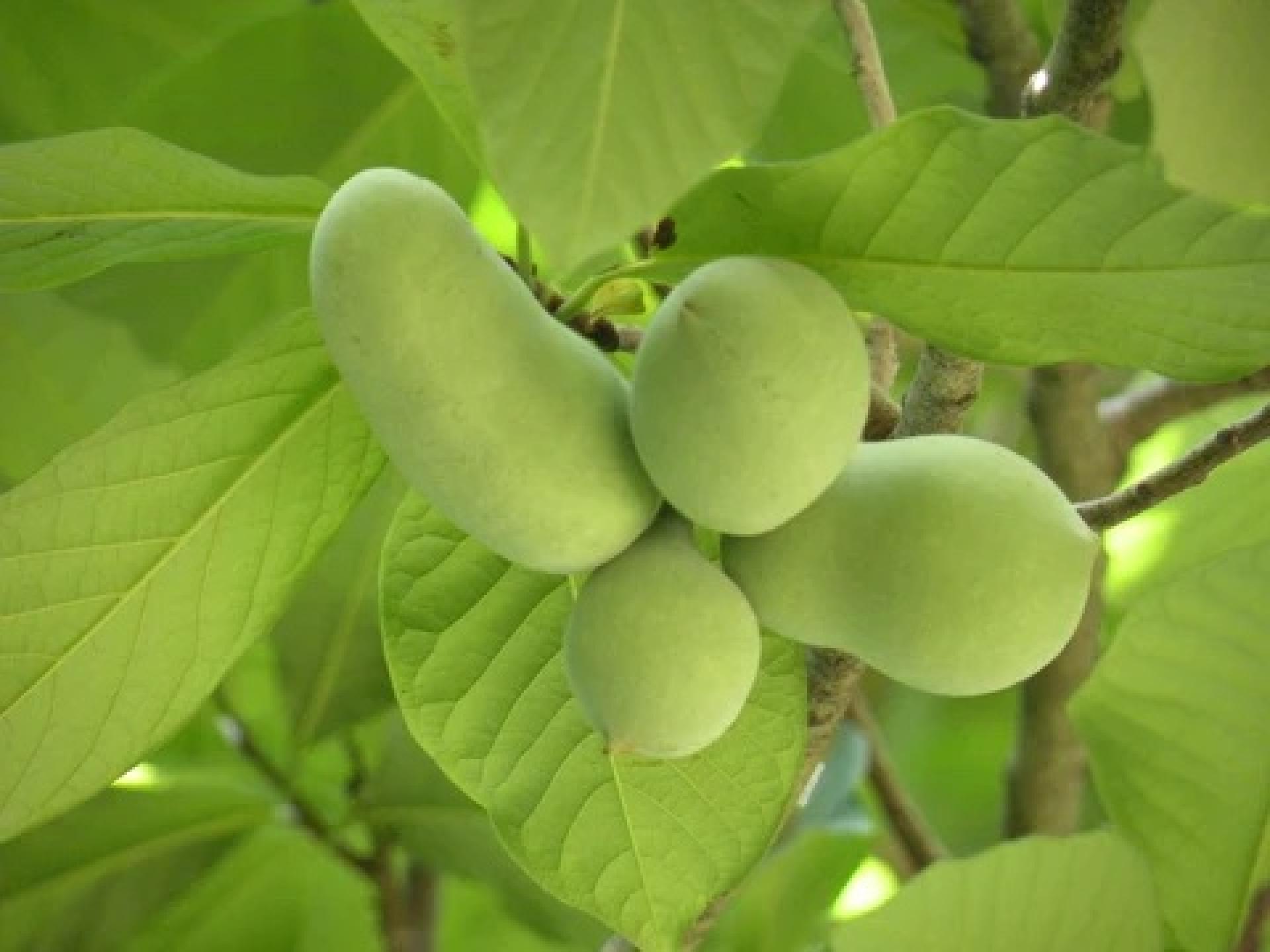You are here
Be A Better Gardener: Pawpaws
Be A Better Gardener: Pawpaws
By Thomas Christopher
I’ve got a couple of tropical fruit trees growing in my garden in western Massachusetts and they are flourishing despite winter temperatures that drop well below zero on occasion. These are pawpaws, a cold hardy member of the custard apple family (the Annonaceae), a family that also includes such tropical treats as the cherimoya and the soursop, which you may recall from vacations in the Caribbean.
Personally, I find the fruits of the pawpaw even more delicious. They are large – the plump, green-skinned fruits may measure up to six inches long – and when ripe they are filled with a custard-like flesh that tastes like a cross between mango and banana, with perhaps a hint of pineapple. What’s even more remarkable is that pawpaws, even though they are members of a tropical plant family, are natives of eastern North America, growing wild as far north as southern Ontario and as far west as southeastern Nebraska and eastern Texas.
Why don’t we find these delicious fruits in our supermarkets? I posed that question to Sheri Crabtree, a Horticulture Research and Extension Associate at Kentucky State University. Sheri helps to manage Kentucky State’s Pawpaw Program. the only full-time academic research program focused on this fruit. Kentucky State (and Sheri) grow lots of pawpaws. As the U.S. Department of Agriculture’s national clonal germplasm repository or gene bank for pawpaws, Kentucky State maintains a collection of 2,000 pawpaw trees collected from 17 states, in a 12-acre orchard at the KSU farm.
Sheri explained to me that pawpaw fruits have a couple of characteristics that have traditionally kept them out of commercial orchards. Orchardists prefer fruit like peaches or plums that can be picked while they are a little underripe and hard so that they may be shipped in bulk across the country and set out on supermarket shelves as they ripen. The quality of such survivors can’t match that of fruits that have ripened on the tree, but their ease of handling and durability compensate for that, at least in the opinion of mass marketers.
Pawpaws do not lend themselves to such treatment. If picked before the fruits start to soften, they never ripen. And once they have softened, pawpaws bruise easily, discoloring the fruits. Nor do they last long on the shelf. Once fully ripened, they last only two to three days, or five to seven days if kept refrigerated.
Kentucky State has been working on promoting pawpaws as a crop for small farms to be sold in local farmers markets or processed into ice cream or brandy. As Sheri pointed out, though, they are also ideally suited for home gardeners such as me. The trees adapt to a wide variety of soils, though they grow best in well-drained, deep, organic-rich soils. In the wild, they typically grow as understory trees in hardwood forests in conditions of semi-shade. In the garden, they bear the best crops of fruit if planted in full sun, where the compact trees grow to a height of 20-30 feet.
Pawpaws are not heavily browsed by deer and suffer from no serious insect pests or diseases, although a variety of animals such as raccoons and opossums do relish the fruits. You need to plant at least two trees of different strains so that they can cross-pollinate, and to protect new trees from sunburn with a tent of shade cloth for a year or two after planting, but when given the conditions they prefer, pawpaw trees grow rapidly. And thanks to the efforts of Kentucky State and a number of private enthusiasts, there are some superior strains with larger more flavorful fruits available from specialist nurseries.
A bonus of pawpaws is that because they evolved in North America, they support a range of native insects. Pawpaws are the sole hosts for caterpillars of the beautiful zebra swallowtail butterfly, and its leaves are also foraged by a dozen other species of butterflies and moths. Typically, the damage is slight, so that, unlike many more familiar fruits such as apples and plums, pawpaws do not require regular spraying with pesticides. The peculiar reddish-purple flowers appear on the branches in early spring before the trees leaf out and have a faint odor of rotten meat, which attracts the flies that are its pollinators.
For more tips on growing pawpaws and to listen to my conversation with Sheri Crabtree about resources available for free from Kentucky State University, log onto the “Growing Greener” podcast.
Be-a-Better-Gardener is a community service of Berkshire Botanical Garden, located in Stockbridge, Mass. Its mission, to provide knowledge of gardening and the environment through a diverse range of classes and programs, informs and inspires thousands of students and visitors each year. Thomas Christopher is a volunteer at Berkshire Botanical Garden and is the author or co-author of more than a dozen books, including Nature into Art and The Gardens of Wave Hill (Timber Press, 2019). He is the 2021 Garden Club of America's National Medalist for Literature, a distinction reserved to recognize those who have left a profound and lasting impact on issues that are most important to the GCA. Christopher’s companion broadcast to this column, Growing Greener, streams on WESUFM.org, Pacifica Radio and NPR and is available at berkshirebotanical.org/growinggreener.
Help Our Garden Grow!
Your donation helps us to educate and inspire visitors of all ages on the art and science of gardening and the preservation of our environment.
All donations are 100 percent tax deductible.


